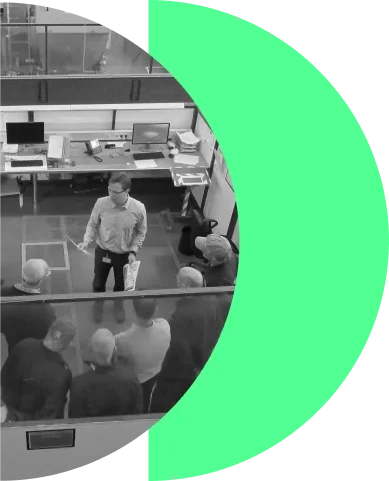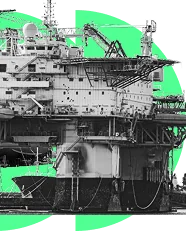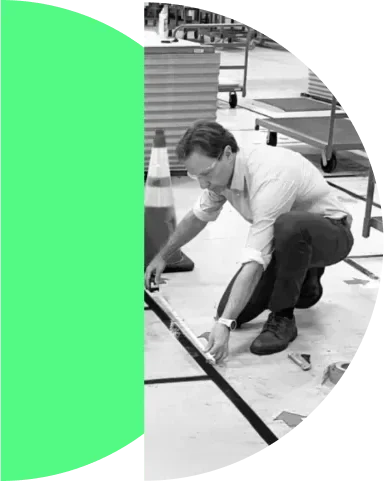Duggan’s value stream design defines how your operation will work end-to-end in the future state. The design becomes the blueprint for building operations to win business and drive sustainable growth without endless improvements.
Greater than 30% faster lead times
Up to 50% reduction in required floor space
98%+ on-time delivery to the customer
Duggan Associates uses value stream design in a management-free system for flowing value to your customers.
Our proven process begins with gaining a clear view of your operation. We then follow a design-based methodology to generate a future state for delivering to your customers on time, every time. We focus on clearly defining an endpoint or destination. If your destination is clear, we’ve found that you can avoid the cycle of never-ending improvements.
In our process, we avoid brainstorming. Instead, we work with your team in a manner that enables them to leapfrog the traditional improvement curve because every action is targeted toward achieving the future-state design. No actions are wasted.


A large, vertically integrated naval shipbuilder needed to become a “preferred supplier” to its government customer.

A leading industrial manufacturer, supplying the Energy and Oil & Gas markets, faced stalled growth despite years of efficiency projects.


Value Stream + Operational Excellence Is a Game Changer
Duggan guided the team to the future state value stream design and action plan.
You can be the leanest company on earth and still go broke if you aren’t focused on leveraging lean to grow your business. To grow your business means you have the capacity for innovation, acquisition and new products while consistently delivering on time to your customers.

Those continuously disappointing customers due to missing delivery dates make it harder to win new business.
Duggan’s value stream design implements a guaranteed turnaround time. The design is anchored in mathematics and executed with quality education to tell your customers when you will deliver and hit that date every time.
If lead times are too long, the repercussions are lost business and frustrated customers.
Duggan’s value stream design deploys lean design criteria for the mathematically best outcome for the operation. Concepts such as single-point scheduling, continuous flow and FIFO generate a connected flow from your receiving area to your shipping location with minimal inventory and management intervention. Duggan projects decrease lead time by more than 30%.
At Duggan Associates, we define your organization’s normal value stream flow. The normal flow represents the ideal, designed state of your processes—how materials, information, and work should move smoothly from start to finish under expected conditions. Defining and visualizing this normal flow creates a clear standard for performance. It lets everyone on the team recognize when the process is operating correctly and predictably, supporting on-time delivery and efficient resource use.
Another aspect of flow for some organizations is identifying the flow related to handling complexity or custom variation. After the normal flow is defined for more complex challenges, we apply additional design guidelines in a mixed-model flow.
Once we’ve nailed the normal flow, we must consider handling the unexpected. We’ll explore abnormal value stream flow occurrences when disruptions such as equipment breakdowns, unexpected orders or labor shortages push the system beyond its designed capacity or sequence. Without a clear understanding of normal flow, abnormal conditions are hard to detect and manage, often causing teams to revert to inefficient, reactive workarounds that undermine lean improvements.

Achieving operational excellence requires designing and implementing lean value stream flows. Duggan Associates applies its methodology through eight principles to confirm the outcome is “a business designed to grow, and the design works.”

Duggan doesn’t just provide theoretical advice.
A company should start with an end-to-end blueprint for how work flows through the operation. This comprehensive view identifies bottlenecks, inefficiencies and disconnects between processes that isolated improvements often miss. Starting with value stream design ensures all parts of the operation are aligned and optimized, rather than making piecemeal changes that can create new problems downstream. This design sets a defined future state and creates a focused roadmap to get there, enabling faster, more predictable delivery, better resource utilization and a foundation for sustainable growth. Without this starting point, companies risk investing time and resources into fixes that don’t improve overall performance or customer outcomes.
Visualize how value moves through your operation when mapping your end-to-end process. Identify uncontrolled inventory problems, scheduling chaos and anything else that disrupts flow. Using a design-driven, math-based approach, you create a future-state blueprint that optimizes material, information and labor flow to meet customer demand reliably.